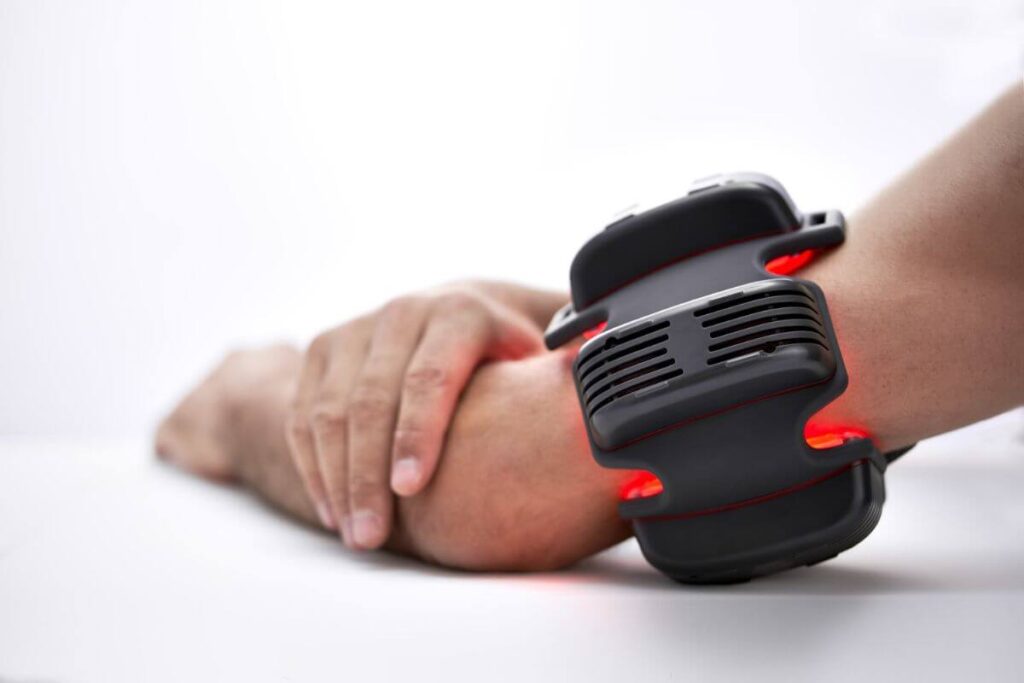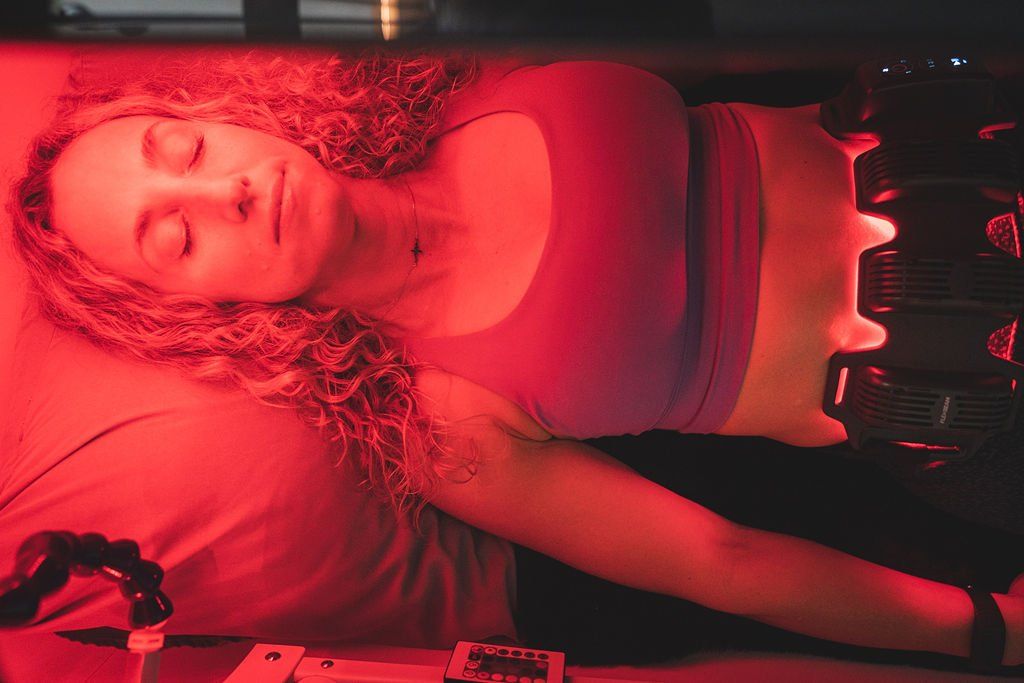Your cart is currently empty!
Is Red LED Light Therapy the Way to Go?
Table of Contents
Red LED light therapy has other names, such as: photobiomodulation, near-infrared LED therapy, or red light therapy. It is a type of treatment that uses light-emitting diode devices to emit red and near-infrared light.
This type of light mimics natural sunlight. Specifically the range of light that the sun emits at sunset and dawn.
This treatment involves using a device that emits red and near-infrared light. Light of these specific frequencies penetrates beyond the skin to impact the entire body, improving both physical and mental well-being.
Why Choose Red Light Therapy?
Research has shown that red LED light therapy promotes mitochondrial oxidative metabolism, improves nerve regeneration, and increases antioxidants.
It also reduces musculoskeletal pain, boosts the immune system, and decreases inflammation in the body.
What’s more, red LED light therapy treatments boost collagen production in the skin, efficiently treat acne vulgaris, and raise levels of beta-endorphins in plasma, which can help alleviate the symptoms of depression and anxiety.
And those are only some of its benefits.
Equally importantly, treatments with red and near-infrared light devices are entirely safe and have no adverse side effects. They are gentle, non-invasive, and suitable for all skin types.

Near-infrared and Red LED light therapy use frequencies of light that don’t cause heat. Unlike conventional lasers, it can’t cause burns or tissue damage.
They don’t emit UV rays and don’t involve any heat. This means that it doesn’t cause damage to the skin, cause skin cancer, or increase the chances of getting it.
Even though red light energy penetrates the skin all the way to the muscles, nerves, and bones, it doesn’t cause any harm on its way there.
They can be safely used on a daily basis and are easily available in the comfort of your own home. You can enjoy its benefits without the need for in-office procedures.
Why Choose LED Light Therapy(RED) Over Laser?
Red LED light therapy is a safer, more convenient, and much more affordable alternative to laser treatment.
Unlike LED light therapy, laser therapy can be painful and invasive, requiring a long recovery period. It has a high heat-emitting property that can cause damage to the eye and the skin, if used incorrectly.
This is why laser therapy treatments require a certain degree of education or training. That is why it can only be safely performed in a clinic.
On the other hand, using red LED devices does not require any special training. It can be safely done by the user at home. Simply place an LED device on the body where needed, turn on your device, and let it do its work.
LED therapy treatments can cover larger areas of the body within a relatively short period of time. That is simply impossible to do with laser treatments because the light beams they emit are small.
Those who prefer laser treatments to LED devices usually claim that lasers have a more focused energy delivery that LEDs. That is only partially true. Lasers keep their direct stream of light only until a certain depth underneath the skin. After that point, this light diffuses and has an identical effect to LEDs.
Additionally, it is difficult to achieve uniform skin irradiation with a laser, while red LED light therapy enables uniform irradiation.
Why Choose Red Light Over Blue Light Therapy?
Red vs blue light therapy is a conversation that’s been going on forever. Even though red light and blue light therapy treatments are similar, red light has a much longer wavelength.
Blue light wavelength usually ranges from 380 to 525 nm, while red light ranges from 600 to 700 nm, and near-infrared from 800 to 2,500 nm.
In other words, near-infrared and red LED light therapy are effective not only on the skin’s surface but for penetration of about 1.5 inches into the body.
This is how Red LED light therapy reaches the deeper layers of the skin, promoting healing and cell rejuvenation.
On the other hand, blue light therapy treatments are only effective on the skin’s surface. This limits their benefits compared to treatments using red and near-infrared light.
Why Choose a Portable Red LED Light Therapy Device?
There are different types of red LED light therapy devices, but which one is right for you depends on what you need it for and how you plan on using it.
Various face masks, pens, and bulbs are only used to treat facial skin.
Wraps with attached red LED lights used to relieve the pain of injury, neuropathy, and arthritis have become outdated with the advent of new and more powerful devices.
Red LED light therapy panels range from the size of a book to a large, full-body mirror, which makes them inconvenient for self-treatment.
It also makes them inefficient because much of the light from a wall panel will be reflected by the body and will not reach the target site inside the body.
That means your body cannot use the energy output panel most adequately, and at least some of it will inevitably be missed.
On the other hand, portable red LED light therapy devices like FlexBeam are convenient, easy to use, target the body part you want, and are thus more effective than therapy panels.
FlexBeam is contoured, which means it can fit all parts of your body. Unlike with the panels, there is minimal energy loss, and you have complete control over the dosage you receive.
Even though it’s lightweight and compact, the FlexBeam offers the most effective dose of red light in terms of energy density and power density.
Because FlexBeam is battery-powered, you are entirely safe from the adverse effects of electromagnetic fields that can harm your health.
That is not the case with the panels that have to be plugged into the main electricity supply.
Perhaps most importantly, you can take FlexBeam everywhere with you, place it on an exposed body part you want to treat, strap it on, and move around.
With a panel treatment, you have to stand naked in one place in the middle of the room. Not exactly comfortable or convenient.
What Is the Best Red LED Light Therapy Device?
There are a great number of products that use red light as a way of improving your wellness levels, rejuvenating your skin, and offering many other health benefits.
That makes it increasingly difficult to pick the right red light therapy product for yourself. So, why not simply choose the cheapest option available?
FlexBeam offers light in red and near infrared wavelengths with appropriate energy density and optimal irradiance.
Energy density refers to the dose of light you are getting per square centimeter. FlexBeam has a dose of over 76 J/m2, considerably more than the most expensive red light panels on the market, let alone less powerful lamps.
Irradiance or power density refers to the power your body receives per square centimeter. While FlexBeam gives you 133 mW/cm2, most cheaper red light products on the market give you somewhere just above 30 mW/cm2.
FlexBeam offers red light in the wavelength range of 625-635 nm and near infrared light in the range of 810-840 nm, both of which have been found to be the most efficient for significant healing effects.
Most other red lamps have wavelengths between 700-770 nm, which has been proven to be the least efficient range.
FlexBeam adjusts to the shape of your body, delivering all the red light energy to the precise area you want with minimal loss in energy. You do not have to expose the whole body to red light to reap the benefits of red light therapy. So, even though cheaper options are on the market, they are nowhere near as safe, convenient, and clinically proven to be as efficient as FlexBeam. That’s why FlexBeam is your red LED light therapy device of choice.
Sources
- Laser Hazards – Overview | Occupational Safety and Health Administration. https://www.osha.gov/laser-hazards/
- Laakso EL, Cramond T, Richardson CA, Galligan J. PLASMA ACTH AND Β-ENDORPHIN LEVELS IN RESPONSE TO LOW LEVEL LASER THERAPY (LLLT) FOR MYOFASCIAL TRIGGER POINTS. Laser Therapy. 2004;14(0_Pilot_Issue_2):0_45-0_53. doi:10.5978/islsm.14.0_45
- Lee SY, You CE, Park MY. Blue and red light combination LED phototherapy for acne vulgaris in patients with skin phototype IV. Lasers in Surgery and Medicine. 2006;39(2):180-188. doi:10.1002/lsm.20412
- Li W, Seo I, Kim B, Fassih A, Southall MD, Parsa R. Low‐level red plus near infrared lights combination induces expressions of collagen and elastin in human skin in vitro. International Journal of Cosmetic Science. 2021;43(3):311-320. doi:10.1111/ics.12698
- Hamblin MR. Mechanisms and applications of the anti-inflammatory effects of photobiomodulation. AIMS Biophysics. 2017;4(3):337-361. doi:10.3934/biophy.2017.3.337
- Crna WJK DC. Immune-modulating Effects of Therapeutic Laser. Med Central. https://www.medcentral.com/pain/chronic/immune-modulating-effects-therapeutic-laser. Published March 7, 2011.
- Cotler HB. The use of low level laser therapy (LLLT) for musculoskeletal pain. MOJ Orthopedics & Rheumatology. 2015;2(5). doi:10.15406/mojor.2015.02.00068
- Ishiguro M, Ikeda K, Tomita K. Effect of near-infrared light-emitting diodes on nerve regeneration. J Orthop Sci. 2010;15(2):233-239. doi:10.1007/s00776-009-1438-4
